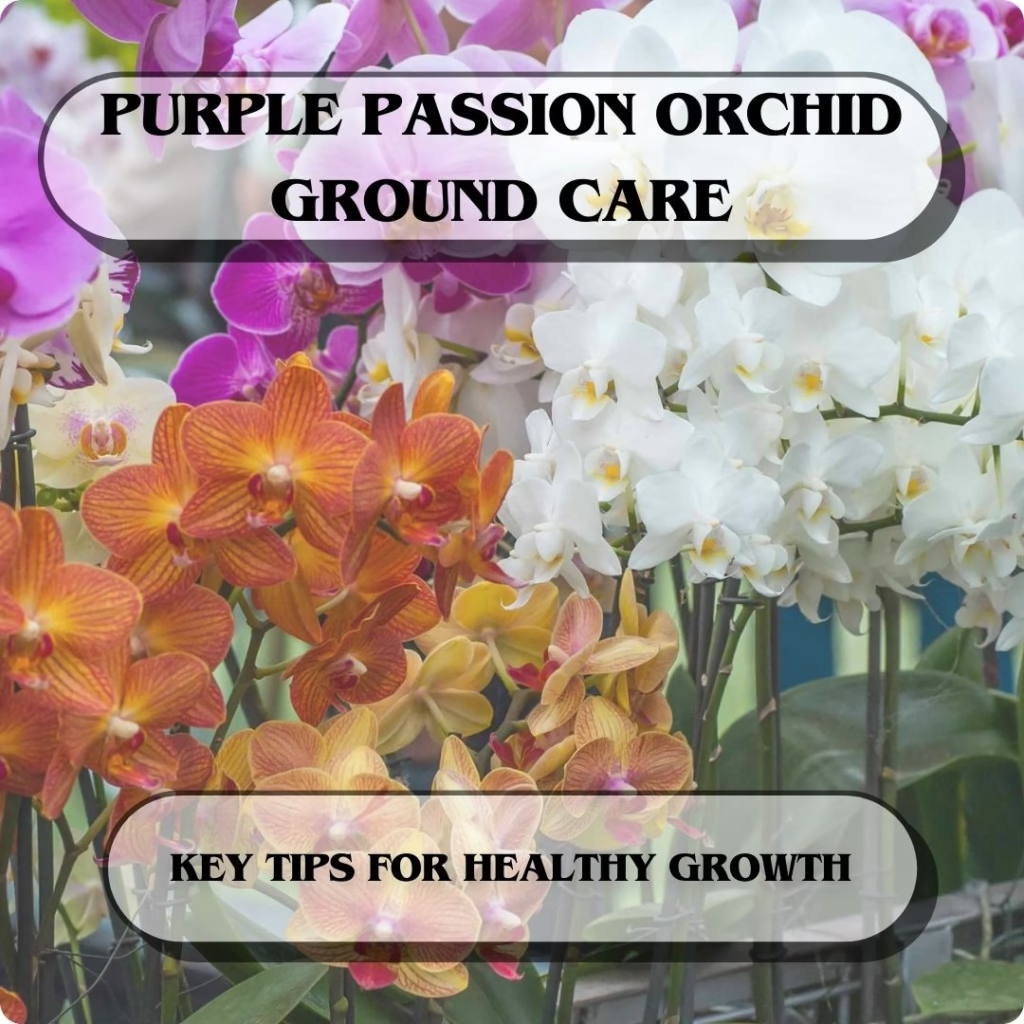Description of the Plant
The Purple Passion Orchid is prized for its bright flowers that resemble fluttering butterflies. Here’s what makes it special:
Flowers

The flowers of the Purple Passion Orchid highlight vibrant hues of bright purple, orange, and yellow, decorated with twisted patterns that add to their visual appeal. Each bloom individually lasts several weeks, making it a stunning focal point in any space. Moreover, for months or even years, the flower spikes are remarkable for their ability to produce blooms successively. By making them a favorite among orchid enthusiasts and a strong addition to any collection, these extended booming period enhances the orchid’s beauty and also provide a continuous display of colors and elegance.
Leaves
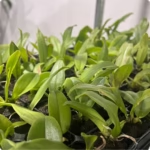
The leaves of the plant are long and beautifully spotted with dark green and purple patterns. Even when the plant is not in bloom, it contributes a significant ornamental value. Adding depth and visual interest to the space, this mound-shaped orchid features medium dark green, spear-shaped leaves with parallel veins that create the illusion of pleats. Ensuring the plant remains appealing year-round, this robust foliage enhances the overall aesthetic of any indoor or garden setting.
To ensure your Purple Passion Orchid thrives, create the right environment:
Climate and Temperature
The Purple Passion Orchid prefers temperatures between 65 and 85ºF (18 to 29ºC) and thrives in warm, humid conditions. To prevent its growth from being hindered, avoid exposing the plant to drafts or sudden temperature changes. For optimal results in its ground care,
- Maintain an environment that stays warm, ideally between 65 and 80 ºF; temperatures falling below 60 degrees can slow or halt flowering.
- These orchids flourish in high humidity, so it is recommended to mist the foliage and use a pebble tray filled with water to create ideal moisture levels in the ground.
Light Requirements
Bright, indirect light is ideal for promoting healthy growth and vibrant blooms in the Purple Passion Orchid. Direct sunlight can be detrimental, as it may wither the leaves and compromise the plant’s health. For optimal light exposure, place the plant near a south or east-facing window where it can receive filtered light. This positioning supports its distinctive beauty and encourages flourishing growth, ensuring the orchid gets enough brightness without the harsh effects of direct sun. Regularly monitoring the light conditions will help maintain the orchid’s health and vitality.
Soil Preferences
To promote healthy growth, the Purple Passion Orchid requires a well-draining orchid mix specifically formulated for epiphytic plants. An effective mix typically contains bark, sphagnum moss, and perlite, which work together to ensure good airflow around the roots and prevent root rot. The bark aids in drainage, while sphagnum moss helps retain moisture without becoming overly saturated. Perlite further improves aeration, creating a healthy environment for the roots. This type of soil replicates the orchid’s natural habitat, allowing it to thrive and produce beautiful blooms. Be sure to check the moisture level regularly to maintain the ideal ground conditions for your Purple Passion Orchid.
Care and Maintenance of The Purple Passion Orchid
Proper care is key to maintaining a healthy Purple Passion Orchid/ ground:
Watering Needs: Thoroughly water your Purple Passion Orchid when the potting medium begins to dry out. A common issue for orchids is root rot, so it’s important to avoid overwatering to maintain healthy ground conditions. If possible, use distilled or rainwater, as tap water may contain chemicals that can harm the plant. Ensure that the pot has drainage holes to allow excess water to escape, further supporting optimal ground care.
Fertilizing Tips: Commonly in spring and summer, feed your Purple Passion Orchid with a balanced orchid fertilizer, such as a 20-20-20 formula, every two weeks during its active growth period. This will provide the important nutrients needed for healthy growth and flowering, contributing to optimal ground conditions. In the winter months, when the plant is in a dormant phase, reduce feeding to once a month or stop altogether to prevent nutrient buildup in the potting medium.
Pruning and Repotting: After blooming ends, to encourage new growth and maintain the plant’s appearance, prune any dead or spent flower spikes. Additionally, ensure that your Purple Passion Orchid has the proper ground care by repotting it every 2 to 3 years or when the potting medium begins to break down. When repotting, try to minimize root disturbance to help the plant adjust more easily to its new environment. Use fresh orchid mix to ensure optimal ground conditions for growth.
Like any plant, the Purple Passion Orchid can face challenges:
Pests
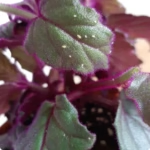
Treat any infestations promptly using insecticidal soap or neem oil to protect the plant. Keep an eye out for common pests such as aphids, mealybugs, and spider mites, which can harm your Purple Passion Orchid.
Root Rot
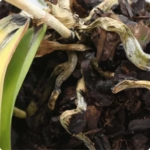
Leading to serious damage, root rot is often caused by overwatering or inadequate drainage. To prevent this, use a well-draining potting medium and ensure that your pot has adequate drainage holes to avoid waterlogging.
Leaf Discoloration
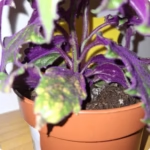
While dark spots could suggest fungal issues, yellowing leaves may indicate that your orchid is receiving too much sunlight. Adjust the plant’s light exposure and improve air circulation to help maintain healthy foliage.
Propagating the Purple Passion Orchid requires patience and precision:
Division
When repotting your Purple Passion Orchid, you can propagate it by dividing the plant. To increase the chances of successful growth, ensure each division has at least three pseudobulbs and healthy roots. After dividing, allow the cuts to callus for a few hours before repotting in a fresh orchid mix.
Keiki (Baby Orchid)
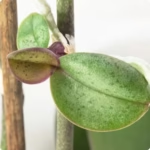
Occasionally, you may notice small plants, known as keikis, developing on the flower spikes of your orchid. Once these keikis have grown roots that are at least two inches long, you can carefully separate them from the parent plant. Pot the keikis in their containers with an appropriate orchid mix to promote healthy growth as they establish themselves.
Benefits of Growing Purple Passion Orchids
This orchid offers more than just beauty:
- Aesthetic Appeal: The plant adds a touch of exotic elegance to any setting, with its butterfly-like flowers serving as a stunning focal point in homes or gardens. Their unique shape and vibrant colors bring visual interest and charm, enhancing the overall décor.
- Air Purification: Orchids, including the Purple Passion Orchid, can contribute to improved air quality by absorbing carbon dioxide and releasing oxygen. This natural air purification process makes orchids both beautiful and beneficial for your space, contributing to a healthier indoor environment.
Conclusion
The Purple Passion Orchid, known scientifically as Psychopsis papilio, is a beautiful addition to any indoor or garden space and a delightful plant to care for, especially when considering its ground care needs. With its vibrant, butterfly-shaped flowers and striking leaves, it adds a touch of exotic elegance and visual intrigue to your environment. By ensuring it has the right conditions—such as proper light, humidity, and care—you can enjoy the long-lasting blooms this orchid provides, filling your home with continuous beauty and joy.
Beyond its stunning appearance, this orchid offers additional benefits. Its ability to purify the air helps create a healthier living space, making it a valuable addition to any home. Whether you’re an experienced orchid lover or just starting out, the Purple Passion Orchid can enhance your gardening journey with its charm and resilience. Embrace the experience of nurturing this remarkable plant and relish the rewards of its breathtaking displays and positive influence on your surroundings.
FAQs
- What makes the Purple Passion Orchid unique?
Its butterfly-shaped blooms and mottled leaves make it stand out. - How often should I water my Purple Passion Orchid?
Water when the potting medium starts to dry out, typically every 5–7 days. - What light conditions are best for this orchid?
Bright, indirect light is ideal. Avoid direct sunlight. - Can I grow it in regular potting soil?
No, use a well-draining orchid mix with bark and sphagnum moss. - Why are my orchid’s leaves turning yellow?
Likely due to too much direct sunlight or overwatering. - How do I fertilize the orchid?
Use a balanced orchid fertilizer every two weeks during active growth. - When should I repot my Purple Passion Orchid?
Repot every 2–3 years or when the potting medium degrades. - Can I grow it outdoors?
Only in warm, humid climates with temperatures above 65°F. - What pests affect Purple Passion Orchids?
Common pests include aphids, mealybugs, and spider mites. - How long do the blooms last?
Each bloom can last weeks, and the plant may rebloom for years on the same spike.
For articles related to plants and home decor click the link below




Thank you for reading, for more interesting articles visit our homepage.

